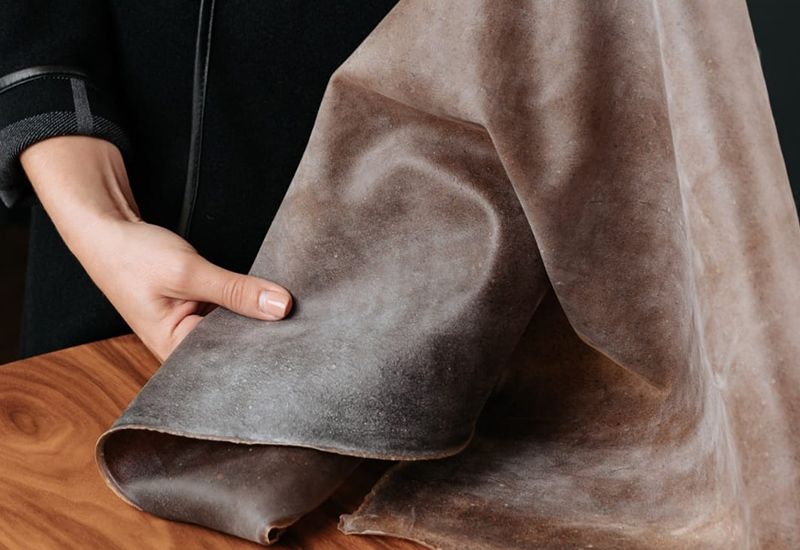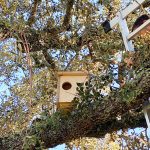Alfarroba.tex is an out-of-this-world textile made of carob which is a substitute for animal leather.
WORDS Natercia Godinho
Fashion designer Monica Gonçalves has been at the frontier of developing textiles from the most unthinkable, and yet natural, materials that substitute animal leather. She began with fio de cortiça (cork wire) 12 years ago in order to replace wool. A few years later, Sonae, a giant multi-national business company, invited Monica to develop products from tons of banana skin which she converted into book covers. Her work won the European Innovation Award.
Monica grew up in Lisbon in a family where creativity and academics were highly praised. Her mother, who was a seamstress, encouraged Monica to use her natural ability to create patterns and designs whilst her siblings, who were university students, exposed her to scientific investigations.
Monica has a degree in Fashion Design and later went to Italy to further her skills. She specialised in sustainable materials and began her career by researching natural resources and turning them into textiles for multiple purposes: clothing, shoes, jewellery, and even in architecture. Monica emphasised that her love affair with Italy and her counterparts will always be in her heart. Her textiles are exported worldwide.

Some years after her commercial success with textiles, she started to feel a detachment from her innovative products, as she knew she had more to offer. In no rush, and devoting time to her newborn daughter, she let the ideas flow from within her heart. Last year, she decided to visit her father who is a native of Algoz and, as she was walking through the woods, the idea of turning carob into a textile sounded promising. Feeling excited, she went home and asked her father to provide her with this versatile fruit.
Soon after, she investigated this hard-shell pod that tastes sweet, is dry and is mainly used for culinary purposes. Portugal is the main producer of carob which comes from an evergreen robust tree (alfarroba) that requires only five litres of water a year. In February, Monica studied its elements under different conditions in the open air. She explains that carobs have to be hydrated in order to be elastic, then left to dry to a point where they don’t sweat or turn into honey. The stabilisation process takes a long time, and after many trials and errors, she finally got the right ingredients of 80% carob with 20% recycled cellulose and natural rubber.


She does not use any chemical products; therefore, the cloth has its own tones and colours. Monica describes her textile as being resistant, resilient, and sweet. Her biggest challenge in developing this textile was its dryness. She is very mindful of utilising natural resources to maximise the sun hours that Portugal offers and to minimise electricity consumption. All this she says is so the textile is affordable to the customer and eco-friendly. A few months later, Alfarroba.tex was born.
In early October, Alfarroba.tex participated in the Portugal fashion show where it was a huge success. Her intention was to show other fashion designers the applicability of carob textiles in the clothing industry. She explains with a lovely smile that everyone was surprised as they kept asking her if it could be ironed or if it tasted sweet. She even laughed out loud when she recalled that someone spotted a stain on the carob skirt she was wearing. Monica proceeded to get a glass of water, she then splashed it all over the skirt and to everyone’s delight and surprise, the stain disappeared.
Monica does not produce ready-made clothes, only the textile which she presents at workshops. She is a very engaging and creative individual willing to pass on her knowledge and is open to consultations.
www.instagram.com/alfarroba.tex













